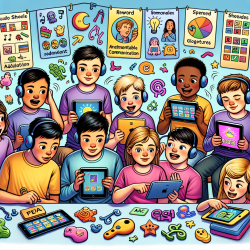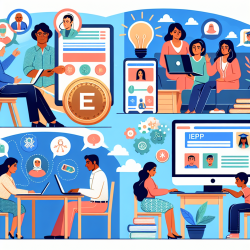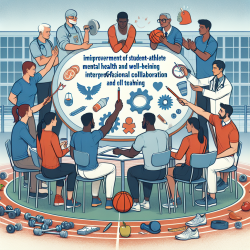Introduction
In the field of special education, practitioners are continually seeking innovative methods to enhance communication for students with severe autism spectrum disorder (ASD). A recent study, "Effects of an iPad-based Speech-Generating Device Infused into Instruction with the Picture Exchange Communication System for Adolescents and Young Adults with Severe Autism Spectrum Disorder," offers valuable insights into using technology to improve communication skills in this population.
Understanding the Study
The study explored the efficacy of integrating an iPad-based speech-generating device (SGD) with the Picture Exchange Communication System (PECS) for adolescents and young adults with severe ASD. The iPad was equipped with the SPEAKall!® application, allowing participants to communicate using digitized speech. The research focused on three individuals aged 14 to 23, all diagnosed with severe ASD and limited functional speech.
Key Findings
- Improved Requesting Skills: All participants showed increased ability to request items, demonstrating the potential of integrating SGDs into PECS instruction.
- Generalization of Skills: Participants were able to generalize requesting skills from edible to tangible items, indicating the flexibility of learned skills.
- Speech Production: While requesting behaviors improved, results for natural speech production were mixed, suggesting that while SGDs can enhance communication, they may not significantly boost speech acquisition for all users.
Implications for Practitioners
Practitioners can leverage these findings to enhance their instructional methods. By integrating iPad-based SGDs into PECS protocols, educators and therapists can provide students with severe ASD a more effective means of communication. The study highlights the importance of customizing interventions to individual needs, recognizing that while some students may benefit significantly, others may require additional strategies to support speech production.
Encouraging Further Research
While this study provides promising results, it also underscores the need for further research. Practitioners are encouraged to explore additional methods and technologies that can complement SGDs and PECS, particularly those that might enhance natural speech production. Collaboration with researchers and participation in ongoing studies can contribute to a deeper understanding of effective communication interventions for individuals with severe ASD.
Conclusion
Integrating technology into communication interventions for students with severe ASD holds significant promise. By utilizing iPad-based SGDs within PECS frameworks, practitioners can enhance the communication capabilities of their students, fostering greater independence and engagement. As the field continues to evolve, ongoing research and innovation will be crucial in developing comprehensive strategies that address the diverse needs of individuals with ASD.
To read the original research paper, please follow this link: Effects of an iPad-based Speech-Generating Device Infused into Instruction with the Picture Exchange Communication System for Adolescents and Young Adults with Severe Autism Spectrum Disorder.










